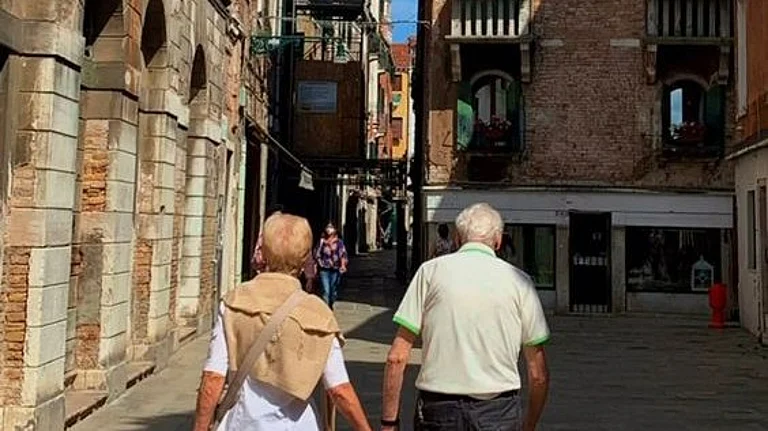For centuries, art historians have debated the location depicted in Leonardo Da Vinci’s iconic Mona Lisa painting's background. Now, an Italian geologist and Renaissance scholar, Ann Pizzorusso, believes she has unraveled the secret using her expertise in rocks and landscapes and shedding new light on the enigmatic masterpiece.
Where Was The Mona Lisa Painted? Geologist Claims To Have Found The Mysterious Landscape
Italian geologist Ann Pizzorusso has uncovered the location of Leonardo Da Vinci's Mona Lisa painting's background, based on her extensive research and analysis of three decades.
Based on her extensive research and analysis of three decades, Pizzorusso posits that the backdrop of the Mona Lisa is set in the town of Lecco, situated on the southeastern shore of Lake Como in Italy. Drawing from Leonardo's own diary entries and field sketches, she traced his footsteps to Lecco, where he worked as an engineer on a project that was later abandoned. “In his notebook he mentions being in Lecco,” she revealed. Although the project wasn't completed, Pizzorusso believes Leonardo's geological observations remained, influencing the landscape in his painting.
Although, Pizzorusso is not the first to have theorized on the location of the Mona Lisa as in 2011, an art historian attributed the painting’s scenery to a small town called Bobbio, while another to Arezzo, she believes she is the first geologist.
While previous speculations have focused on the arched bridge behind the Mona Lisa, Pizzorusso argues the key lies in the unique rock formations. “Bridges are fungible," she says. “If you look in the background, you’ll see pinnacles. It’s a type of erosion that happens in limestone that has fractures in it and breaks off in blocks, almost like a sawtooth pattern… We can show limestone exists in (Lecco). When you look at the Mona Lisa, there’s a series of mountains in the background that have this sawtooth pattern.”

The body of water behind the Mona Lisa also holds geological significance according to Pizzorusso. She believes it represents Lake Como, a subalpine glacial lake formed over 10,000 years ago. "Those elongated, finger-like lakes are a telltale sign of glacial movement," she explains.
Despite her conviction, Pizzorusso kept her theory under wraps for 30 years, sharing it only with fellow Leonardo scholars. Now, she's ready to present her findings at a geology conference in Lecco. Pizzorusso believes this cross-disciplinary approach between earth science and art history can enhance our appreciation of Leonardo's work. “Botticelli, even Michelangelo did terrible backgrounds because they felt the figures were more important,” she says. “If the background is painted right, it gives you more of an appreciation for nature.”
The revelation, however, may just be the beginning. If Pizzorusso's theory holds true, a new question arises: why did Leonardo choose this specific location for the Mona Lisa?
“We don’t know who (Mona Lisa) is, some believe she was a rich Tuscan merchant’s wife,” she said, referring to a popular historical theory that proposes the figure was based on Italian noblewoman Lisa Gherardini. “Why did he put her in this wild, untamed environment? This is not Tuscany. What was he trying to tell us by putting this serene, enigmatic lady in this rugged, alpine environment?” Pizzorusso says.

